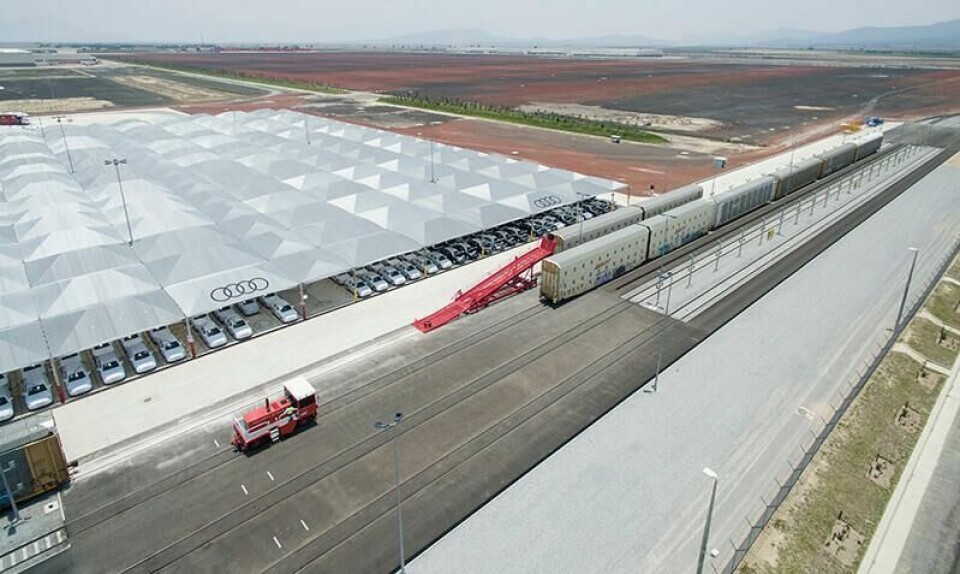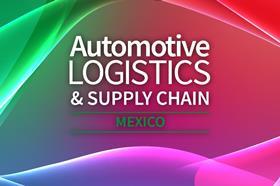Digital competency is needed to predict the unexpected
The automotive supply chain has become more complex since the disruption of the Covid pandemic and will continue to be complex as the industry moves toward electrification. It means that traditional key performance indicators (KPIs) have also had to evolve.
At this year’s Automotive Logistics and Supply Chain Mexico conference carmakers and logistics providers discussed the metrics that are now most important to mitigate disruption, and to achieving greater productivity and efficiency. Digital competency came top of the list according to 40% of delegates canvassed.

Francisco Bravo Gomez, senior director supply chain, Audi México said digital tools helped to predict likely threats to an efficient supply chain and establish process contingencies ahead of time.
“Think of a fire department that prepares every time in advance the proper contingency plan for the type of fire they are facing,” said Bravo. “In the supply chain we are getting a fire every day and so we need in advance the proper KPIs to change the processes and the strategies based on proper scenario planning.”
That means having new ways of integrating and presenting the information needed on which to act immediately, according to Bravo.
Sequenced production at San José Chiapa
Audi has been performing well at its plant in San José Chiapa and one KPI Bravo said he was proud of relates to the accuracy of pre-planned production sequencing.
“We are now the second plant in the VW Group with the highest pearl-chain percentage in terms of keeping the sequence in production,” said Bravo. “We are over 93% and this gives you an idea how stable our production has been in a very complicated environment.”
With pearl chain deliveries, suppliers and logistics providers pack parts in the exact sequence of production even for material that may be located hundreds of kilometres from the plant. Audi’s logistics and production teams have worked to improve the accuracy and reliability of these production sequences on a global basis.
“It is a major achievement for us and our teams in the supply chain in Mexico,” said Bravo. “This combined with all the traditional KPIs is something to be proud of in Audi.”
Bravo went on to say that Audi’s KPIs are changing and it is integrating new information and being more flexible with how it measures operational performance. He pointed to the example that Audi was measuring warehouse occupancy and the value of the critical parts stored there.
“If you add to that the possibility of a vessel being delayed because of bad weather, for instance now in the hurricane season, then you have a completely new KPI and you have to put it in context and be able to take a better position.”
No option for failure
KPIs are as much about measuring risk as about measuring performance. Erick Reynoso, director of operations in Mexico for Penske Logistics, said there was no option for failure in logistics and so accurate information on potential interruptions to supply had to be communicated quickly.
“We need to work very hard in communications and put information in the right place at the right moment,” he said. “It is important for decision making and that means money for the OEMS. As a logistics provider we are working very hard to integrate all the information we receive from them, from their carriers and from their suppliers to orientate in the right place at the right moment and help them make better decisions.”
That was shown in the recent strike action in the US that hit supplies to production at Ford, GM and Stellantis. Reynoso said dealing with that meant working hand-in-hand with those OEMs and other partners on contingency plans.

“If we prepare for these things to happen we will be successful in supply chain execution,” he said, adding that it required a lot of work around a lot of different factors in the increasingly complex supply chain of today. “It demands more time, more interaction, more collaboration between the OEMs and the logistics providers,” he said.
Pamela Osornio, managing director for Mexico at Rhenus Logistics, agreed and said gathering and effectively presenting supplier or transport data, as well as information about the transport infrastructure, was crucial to avoiding disruption.
“[We need to] know what is going on with the roads, with the ports, which are bottlenecked for everyone,” she said. “In terms of digital information and automatisation, how can we push our governments to make our processes easier or at least [bring them] out of the stone age… so we can really achieve different KPIs?
Osornio also pointed to the flexibility required in establishing the metrics required to measure risk and productivity.
“Our KPIs can change by the day with regard to the working environment,” she said. “We need to understand that we can’t stick with the same KPIs as ten or five years ago. KPIs are changing every day.”
What is most important right now to maintaining the efficient inbound supply of parts according to Osornio is communication with the OEM customer. That includes communicating detailed information on company results, inventory and production windows. With that information the logistics provider can offer different options and create a tailor-made service.
“We need to interact more to know what happens if we don’t deliver – what are the consequences, how big are they and what is important for the customers. [That way] you can measure the risk in regards of transit time and just-in-time solutions.
Predicting the unexpected
Greater flexibility in reacting to changing circumstances means reacting to the unexpected but these days it is also about integrating metrics into forward planning to predict the unexpected. At Audi Mexico that is not just about inbound logistics and Bravo pointed to finished vehicle exports between the San José Chiapa plant and the ports.
“We know that on average for the last two years every time we have an order we have an average four days delay for the vessel,” he said. “That means in advance I have the possibility in planning to bring the cars directly to the port so when the vessel is able to get into that port I am able to [move the cars] onto the vessel faster.”
Bravo also pointed to reducing dwell time for those vehicles at port, ensuring that they stay for no longer than three days to keep storage costs down.
“Putting these three KPIs together we need make decisions on what will be my invested capital, my best logistical alternative for delivering the cars into the port, and what is the best strategy to overcome this challenge,” said Bravo. “Based on the history I can predict that it will happen with some certainty.”






